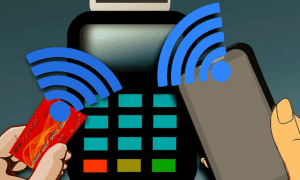Are you tired of losing customers because your payment options don’t match their preferences? Imagine a world where every customer is satisfied with the way they pay, leading to increased sales and loyalty. In this blog post, we will delve into the fascinating realm of understanding and meeting customer preferences through different payment types. Get ready to discover how offering a range of payment options can revolutionize your business and take it to new heights.
What are Payment Types?
There are four primary payment types that businesses must consider when determining which option to accept: Credit Cards, Debit Cards, ACH Payments, and Checks. Each has its own set of benefits and drawbacks that must be carefully considered.
Credit cards are the most popular form of payment and offer customers convenience, flexibility, and security. However, they also come with high fees for businesses. Debit cards are a cheaper alternative for businesses, but they offer less protection for customers in the event of fraud or dispute.
ACH Payments are direct transfers from one bank account to another and offer lower fees for both businesses and consumers. However, they can take several days to process and may require special software to connect the two banks. Checks are the least popular form of payment but can be beneficial for businesses as they offer a low-cost way to send or receive payments.
Benefits of Offering Multiple Payment Types
Different payment types offer different benefits to customers. For example, credit cards offer the benefit of flexibility in terms of how much money can be spent and when payments are due. Debit cards offer the benefit of convenience and security, as they are linked directly to a customer’s bank account.
Offering multiple payment types gives customers the ability to choose the payment method that best suits their needs. It also allows businesses to tap into a larger customer base, as some customers may only use certain payment types. Ultimately, offering multiple payment types is good for business as it can lead to increased sales and happier customers.
Common Customer Preferences for Payment Methods
The average consumer has a preferred method of payment, whether it’s cash, credit, debit, or something else. Understanding these preferences can help businesses provide the best possible customer experience and make sure their sales goals are met.
Some common customer preferences for payment methods include:
-Credit: Many customers prefer to use credit cards for purchases, especially online. Credit cards offer protection against fraud and allow customers to build up rewards points.
-Debit: Others prefer to use debit cards or bank transfer for purchases. This can be due to concerns about debt or simply because they prefer to keep a close eye on their spending.
-Cash: Some customers still prefer to pay with cash, either out of habit or because they don’t trust other methods of payment. businesses should have a way to accommodate these customers without inconvenience them.
-Alternative Payments: A growing number of consumers are using alternative payments methods such as mobile wallets (Apple Pay, Google Pay, etc.), cryptocurrency, and peer-to-peer payments (Venmo, Cash App, etc.). Keeping up with these trends can give businesses a competitive edge.
How to Incorporate Different Payment Types
There are many factors to consider when setting up a business, and one of the most important is how you will accept payments from customers. The payment methods you choose can have a big impact on your customer base and your bottom line. You’ll need to decide which payment types to accept, such as credit cards, debit cards, cash, checks, or online payments. You’ll also need to decide how you will process payments, such as through a point-of-sale system, an eCommerce platform, or a mobile app.
There are pros and cons to each type of payment, so it’s important to understand the different options before making a decision. For example, credit cards offer convenience and flexibility for customers, but they also come with fees that can add up. Debit cards are similar to credit cards but typically have lower fees. Cash is easy to accept but can be hard to track and easy to lose. Checks can be slow to process but offer more security than cash. Online payments are becoming more popular but can be subject to fraud.
The best way to incorporate different payment types is to offer as many options as possible so that customers can choose the method that works best for them. You may also want to consider offering discounts or other incentives for using certain types of payments. By understanding customer preferences and offering different payment options, you can make it easy for customers to do business with you – no matter how they like to pay.
Best Practices for Meeting Customer Preferences
There are a few different ways that you can go about understanding and meeting customer preferences through different payment types. First, you can offer a variety of payment types to your customers and allow them to choose the one that best suits their needs. This could include options like credit cards, debit cards, PayPal, Apple Pay, Google Pay, etc. Another way to understand customer preferences is to ask them directly! This can be done through surveys or by simply asking customers how they would like to pay during transactions. Additionally, you can look at past purchase data to see what types of payments your customers have used in the past and tailor your payment options accordingly. It’s important to keep up with industry trends so that you can offer the latest and greatest payment options to your customers. By doing all of these things, you’ll be sure to better understand and meet the needs of your customers when it comes to payments.
Security Risk Analysis of Different Payment Types
There are myriad payment types available to businesses today, each with its own set of benefits and risks. To better understand these risks, let’s take a look at four common payment types: credit and debit cards, ACH payments, wire transfers, and check payments.
Credit and debit cards are one of the most popular methods of payment, offering convenience and security for both customers and businesses. However, this type of payment is not without risk. Credit card fraud is a serious problem, costing businesses billions of dollars each year. In addition, chargebacks can be costly and time-consuming to resolve.
ACH payments are another common type of payment, often used for recurring billing or similar transactions. While ACH payments are typically very secure, there is always the risk of fraud or mismanagement on the part of the financial institution handling the transactions.
Wire transfers are often used for large or international transactions. This type of payment carries with it a high degree of risk, as there is little to no recourse if something goes wrong with the transfer. In addition, wire transfer fees can be quite high.
Check payments are still used by many businesses today despite the advent of newer electronic payment methods. Check fraud is a serious problem, but checks can be difficult to process and often take longer to clear than other types of payments.
Cost Considerations for Adding New Payment Types
The cost of adding new payment types can vary depending on the payment processor and gateway you use. Typically, there is a fee for each transaction, plus a percentage of the total sale. For example, if you’re using a popular payment processor like PayPal, they charge 2.9% + $0.30 per transaction. So, if you’re selling a product for $100, your customer would pay $103.30 total.
Of course, you’ll also need to factor in the cost of any equipment or software you need to accept the new payment type. For example, if you’re adding support for NFC payments, you’ll need to invest in NFC-enabled terminals or readers. Prices vary depending on the features and capabilities you need, but you can expect to spend several hundred dollars per reader at a minimum.
Don’t forget about the costs associated with training your staff on how to use the new system and accepting the new payment type from customers. Depending on the size of your business and staff, this could be a significant investment of time and money.
Adding new payment types can be a costly endeavor – but one that may be well worth it to meet the needs and preferences of your customers. By doing your research and carefully considering all the costs involved, you can make sure you’re prepared for everything before taking the plunge into expanding your business’s payment options.
Conclusion
With the right payment type for your customers, you can ensure a more satisfying shopping experience and effectively meet customer preferences. By understanding what types of payments are available to you, analyzing data from past purchases, and offering relevant discounts or loyalty programs, you’ll be able to offer more tailored experiences which will do wonders for both their satisfaction and your bottom line. With this in mind it is crucial that companies pay attention to their customer’s needs when considering different payment methods – taking into account financial budgeting appetite as well as overall customer preferences.































